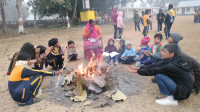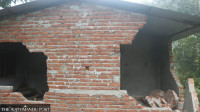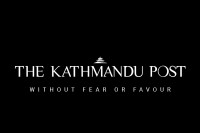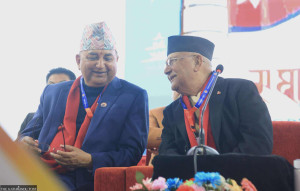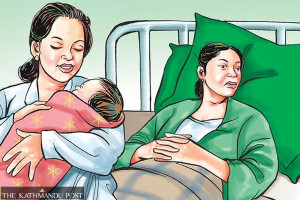National
126 women in Kathmandu metropolis tested positive for HPV infection
Types 16 and 18 of human papillomavirus, responsible for 70 percent of cervical cancers, were found to be responsible for the infection in 28 women.
Post Report
As many as 126 women from the Kathmandu Metropolitan City were found infected with human papillomavirus (HPV) during cervical cancer screening carried out recently by the metropolis.
Of 2,564 samples tested during the screening, 28 women were found infected with HPV types 16 and 18, which are responsible for 70 percent of cervical cancer. The remaining 98 tested positive for other types of HPV.
“We had carried out testing only of HPV types 16 and 18 at the laboratory of Bir Hospital, as neither we nor the hospital laboratory has testing kits of other HPV types,” said Dr Deewash Neupane, medical officer at the health department of the metropolis.
“The test shows 126 women have been infected with human papillomavirus, but we could only identify types 16 and 18 in 28 women. We do not know the exact types of the remaining 98.”
Human papillomavirus is a viral infection that spreads through skin-to-skin contact and is a leading cause of cervical cancer—the second-most common cancer in the developing world. Cervical cancer is a major cause of death among Nepali women, with hundreds diagnosed every year.
Though the exact number of patients suffering from cervical cancer in Nepal is not known, it is estimated that every day, at least four women die of cervical cancer in the country.
BP Koirala Memorial Cancer Hospital in Bharatpur said that more than 700 women suffering from cervical cancer seek treatment at the hospital every year.
Doctors say that infection with the HPV doesn't mean that they are suffering from cervical cancer, but they have to undergo testing every year. Those found infected with the said types of HPV are at risk of having cervical cancer.
According to Neupane, HPV exists in more than 100 different forms, ranging from low-risk to high-risk infections. The HPV types 16 and 18 are frequently associated with invasive cervical cancer compared to other types, meaning that they are more carcinogenic than other types.
“Testing of other types—6, 11, 18, 31, 33, 45, 52 and others—should also be carried out, but we could not perform due to a lack of reagents at the Bir Hospital,” said Neupane. “These types of HPV also cause cervical cancer.”
Along with cervical cancer screening, the city office had also carried out screening for breast cancer and performed mammography on 670 women. Data provided by the KMC shows 370 women underwent breast examination, six had polypectomy, a surgical procedure to take out uterine polyps, 11 cervical biopsies, and five breast biopsies, during screening. One woman had tested positive for breast cancer.
Experts say early treatment can prevent up to 80 percent of cervical cancer cases. They say that most cases of cervical cancer are associated with the HPV. Widespread immunisation could significantly reduce the impact of cervical cancer and other HPV-related cancers worldwide.
The health ministry launched a nationwide HPV vaccination drive in February, targeting girls between 10 and 14. During the campaign, around 1.45 million girls of this age group were inoculated, although officials had estimated that 1.688 million girls in the country are aged between 10 and 14 years.
The vaccination coverage was low in districts of the Madhesh Province and in big cities, including the Kathmandu valley.
Doctors say the HPV vaccine is effective if it is administered before getting sexually active. Efficacy rate on adult women or after getting sexually active is low, according to them.
The government has also decided to put the HPV vaccine on the routine immunisation list.
The World Health Organisation says HPV vaccination is recommended as part of a coordinated strategy to prevent cervical cancer and other diseases caused by the virus.




 13.12°C Kathmandu
13.12°C Kathmandu